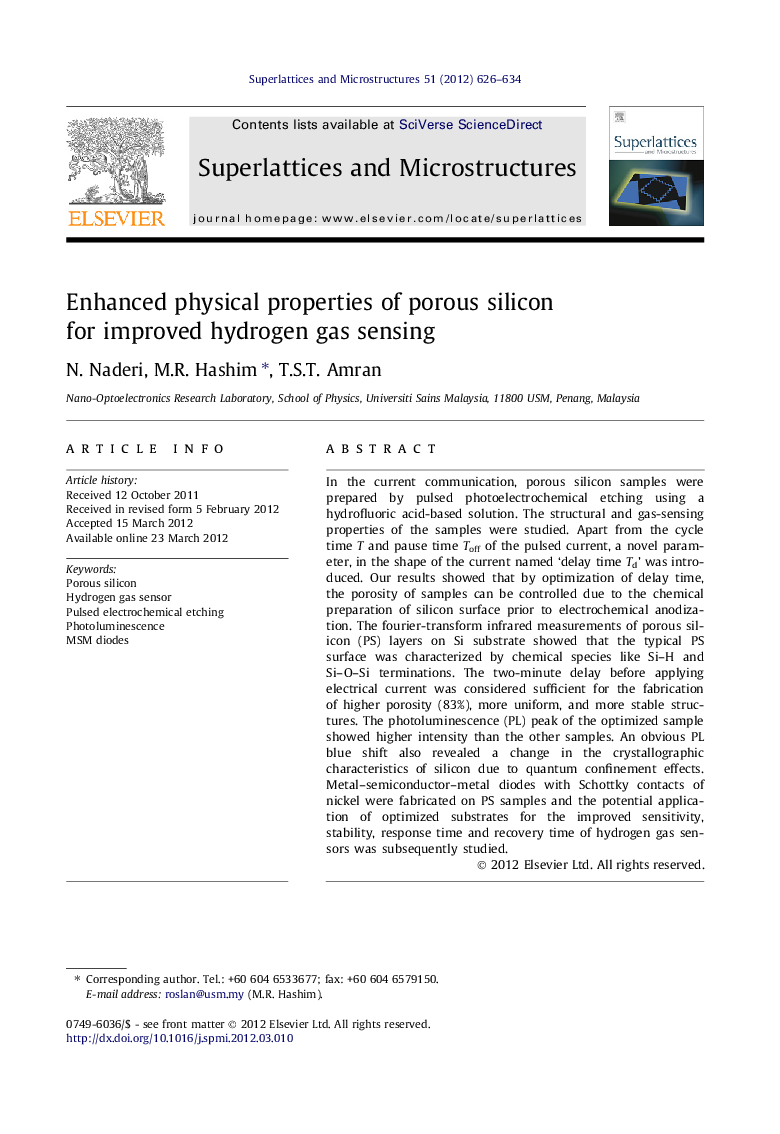| Article ID | Journal | Published Year | Pages | File Type |
|---|---|---|---|---|
| 1553796 | Superlattices and Microstructures | 2012 | 9 Pages |
In the current communication, porous silicon samples were prepared by pulsed photoelectrochemical etching using a hydrofluoric acid-based solution. The structural and gas-sensing properties of the samples were studied. Apart from the cycle time T and pause time Toff of the pulsed current, a novel parameter, in the shape of the current named ‘delay time Td’ was introduced. Our results showed that by optimization of delay time, the porosity of samples can be controlled due to the chemical preparation of silicon surface prior to electrochemical anodization. The fourier-transform infrared measurements of porous silicon (PS) layers on Si substrate showed that the typical PS surface was characterized by chemical species like Si–H and Si–O–Si terminations. The two-minute delay before applying electrical current was considered sufficient for the fabrication of higher porosity (83%), more uniform, and more stable structures. The photoluminescence (PL) peak of the optimized sample showed higher intensity than the other samples. An obvious PL blue shift also revealed a change in the crystallographic characteristics of silicon due to quantum confinement effects. Metal–semiconductor–metal diodes with Schottky contacts of nickel were fabricated on PS samples and the potential application of optimized substrates for the improved sensitivity, stability, response time and recovery time of hydrogen gas sensors was subsequently studied.
► A combination of electroless and electrochemical etching of silicon is introduced. ► A novel parameter called delay-time (Td) is optimized prior to applying pulsed current. ► The uniformity of fabricated porous silicon is enhanced by applying Td = 2 min. ► The optimized porous structures show a noticeable PL effect. ► The efficient hydrogen gas sensors are fabricated on optimized porous silicon.
